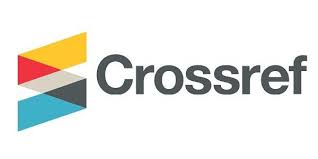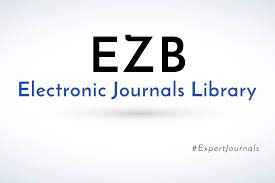Stentless and Stented Ureteroscopic Lithotripsy in Management of Ureteric Calculus–An Observational Study
Keywords:
lithotripsy, ureterolithiasis, ureteral calculi, ureteroscopy, stentless ureteroscopyAbstract
Background- Ureterolithiasis is a common urological problem and presents with acute symptoms. Ureteroscopic lithotripsy is most commonly performed procedure for its surgical management. Stent placement keeps ureter dilated and reduces stricture formation but causes symptoms and other complications. In our study, we assessed both the groups of stentless and stented to concluded better method of management.
Material and Methods- It was a prospective observational study. Ethical clearance was obtained from Institutional Research Committee and Human Ethics Committee (MGMCRI/Res/01/2020/124/IHEC/190) at Mahatma Gandhi Medical college and research institute. The study included patients with ureteral calculi up to size of 10 mm. Patients with contraindications for operative procedure, or with previous procedures on same side and sepsis were excluded from the study. Participants were further divided into two groups that are stentless and stented. Post procedure, patients were assessed for post-operative loin pain, frequency, urgency and dysuria and conclusions were made based on results.
Results- On univariate analysis, there was no difference with regards to age, renal parameters, size and site of calculus in the stented and stentless groups. Post-operative loin pain was significantly more in stented patients measured using visual analogue scale. Difference between the mean loin pain score values was significant (p= 0.001), calculated using repeated measures of ANOVA test. Symptoms of frequency (p=0.03), urgency (p=0.05) and dysuria (p=0.02) were significantly more in stented group of patients.
Conclusion- Stents can be eliminated in uncomplicated ureteroscopic lithotripsy reducing the loin pain and symptoms thus improving postoperative quality of life of patients. Post-operative loin measured from day 4 to day 14 was significantly more in stented group of patients. Symptoms of frequency, urgency and dysuria measured from post-operative day 1 till removal of stent on post-operative day 14 were significantly more in stented group of patients.
References
López M, Hoppe B. History, epidemiology and regional diversities of urolithiasis. Pediatric nephrology. 2010 Jan;25:49-59.
Türk C, Petřík A, Sarica K, Seitz C, Skolarikos A, Straub M, Knoll T. EAU guidelines on interventional treatment for urolithiasis. European urology. 2016 Mar 1;69(3):475-82.
Harmon WJ, Sershon PD, Blute ML, Patterson DE, Segura JW. Ureteroscopy: current practice and long-term complications. The Journal of urology. 1997 Jan;157(1):28-32.
Finney RP. Experience with new double J ureteral catheter stent. The Journal of urology. 2002 Feb 1;167(2):1135-8.
Aghamir SM, Mohammadi A, Farahmand H, Meysamie AP. Effects of prophylactic insertion of Double-J stents to decrease episodes of renal colic in patients with recurrent ureteral stones. Journal of endourology. 2008 Mar 1;22(3):435-8.
Deliveliotis C, Ginanakopoulos S, Louras G, Koutsokalis G, Alivizatos G, Kostakopoulos A. Double-pigtail stents for distal ureteral calculi: an alternative form of definitive treatment. Urologia internationalis. 1996 Feb 4;57(4):224-6.
Leventhal EK, Rozanski TA, Crain TW, Deshon Jr GE, Dretler SP. Indwelling ureteral stents as definitive therapy for distal ureteral calculi. The Journal of urology. 1995 Jan 1;153(1):34-6.
Chandhoke PS, Barqawi AZ, Wernecke C, Chee-Awai RA. A randomized outcomes trial of ureteral stents for extracorporeal shock wave lithotripsy of solitary kidney or proximal ureteral stones. The Journal of urology. 2002 May 1;167(5):1981-3.
Makarov DV, Trock BJ, Allaf ME, Matlaga BR. The effect of ureteral stent placement on post-ureteroscopy complications: a meta-analysis. Urology. 2008 May 1;71(5):796-800.
Pollard SG, Macfarlane R. Symptoms arising from Double-J ureteral stents. The Journal of urology. 1988 Jan 1;139(1):37-8.
Byrne RR, Auge BK, Kourambas J, Munver R, Delvecchio F, Preminger GM. Routine ureteral stenting is not necessary after ureteroscopy and ureteropyeloscopy: a randomized trial. Journal of endourology. 2002 Feb 1;16(1):9-13.
Nabi G, Cook J, N'dow J, McClinton S. Outcomes of stenting after uncomplicated ureteroscopy: systematic review and meta-analysis. bmj. 2007 Mar 15;334(7593):572.
Assimos D, Krambeck A, Miller NL, Monga M, Murad MH, Nelson CP, Pace KT, Pais VM, Pearle MS, Preminger GM, Razvi H. Surgical management of stones: American urological association/endourological society guideline, PART I. The Journal of urology. 2016 Oct;196(4):1153-60.
Netto Jr NR, de Almeida Claro J, Esteves SC, Andrade EF. Ureteroscopic stone removal in the distal ureter. Why change?. The Journal of urology. 1997 Jun 1;157(6):2081-3.
Shao Y, Zhuo J, Sun XW, Wen W, Liu HT, Xia SJ. Nonstented versus routine stented ureteroscopic holmium laser lithotripsy: a prospective randomized trial. Urological research. 2008 Oct;36:259-63.
Kenan I, Salih B, Suat E, Huseyin E, Vehbi K. Is routine ureteral stenting necessary after uncomplicated ureteroscopic lithotripsy for lower ureteral stones larger than 1 cm?. Urological research. 2008 May;36(2):115-9.
Chen YT, Chen J, Wong WY, Shei-Dei Yang S, Hsieh CH, Wang CC. Is ureteral stenting necessary after uncomplicated ureteroscopic lithotripsy? A prospective, randomized controlled trial. The Journal of urology. 2002 May 1;167(5):1977-80.
Başeskioğlu B, Sofikerim M, Demirtaş A, Yenilmez A, Kaya C, Can C. Is ureteral stenting really necessary after ureteroscopic lithotripsy with balloon dilatation of ureteral orifice? A multi-institutional randomized controlled study. World journal of urology. 2011 Dec;29:731-6.
Srivastava A, Gupta R, Kumar A, Kapoor R, Mandhani A. Routine stenting after ureteroscopy for distal ureteral calculi is unnecessary: results of a randomized controlled trial. Journal of endourology. 2003 Dec 1;17(10):871-4.
Cevik I, Dillioglugil O, Akdas A, Siegel Y. Is stent placement necessary after uncomplicated ureteroscopy for removal of impacted ureteral stones?. Journal of endourology. 2010 Aug 1;24(8):1263-7.
Ordonez M, Hwang EC, Borofsky M, Bakker CJ, Gandhi S, Dahm P. Ureteral stent versus no ureteral stent for ureteroscopy in the management of renal and ureteral calculi. Cochrane Database of Systematic Reviews. 2019(2).
Borboroglu PG, Amling CL, Schenkman NS, Monga M, Ward JF, Piper NY, Bishoff JT, Kane CJ. Ureteral stenting after ureteroscopy for distal ureteral calculi: a multi-institutional prospective randomized controlled study assessing pain, outcomes and complications. The Journal of urology. 2001 Nov;166(5):1651-7.
Pengfei S, Yutao L, Jie Y, Wuran W, Yi D, Hao Z, Jia W. The results of ureteral stenting after ureteroscopic lithotripsy for ureteral calculi: a systematic review and meta-analysis. The Journal of urology. 2011 Nov 1;186(5):1904-9.
Damiano R, Autorino R, Esposito C, Cantiello F, Sacco R, de Sio M, D’Armiento M. Stent positioning after ureteroscopy for urinary calculi: the question is still open. European urology. 2004 Sep 1;46(3):381-8.
Hussein A, Rifaat E, Zaki A, ABOL‐NASR MA. Stenting versus non‐stenting after non‐complicated ureteroscopic manipulation of stones in bilharzial ureters. International journal of urology. 2006 Jul;13(7):886-90.
Jeong H, Kwak C, Lee SE. Ureteric stenting after ureteroscopy for ureteric stones: a prospective randomized study assessing symptoms and complications. BJU international. 2004 May;93(7):1032-4.
Xu Y, Wei Q, Liu LR. A prospective randomized trial comparing non-stented versus routine stented ureteroscopic holmium laser lithotripsy. Saudi medical journal. 2009 Oct 1;30(10):1276-80.
Published
How to Cite
Issue
Section
License
Copyright (c) 2025 Vasudevan T, Suvit Jumde

This work is licensed under a Creative Commons Attribution-NonCommercial-NoDerivatives 4.0 International License.





















